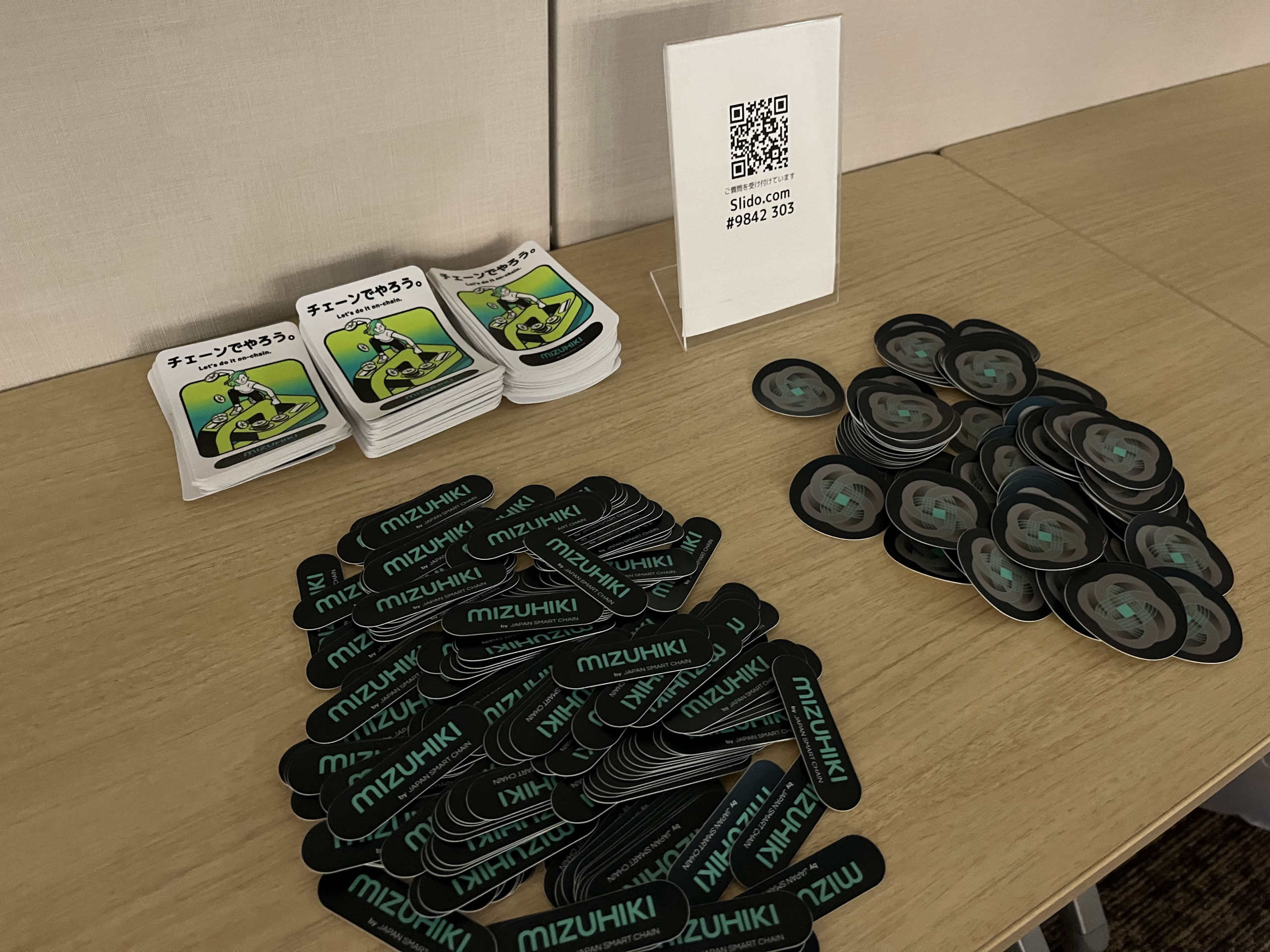The Journey Begins: JSC Testnet & Mizuhiki Suite First Look — Embarking Together to Build the Infrastructure for a New Digital Society —
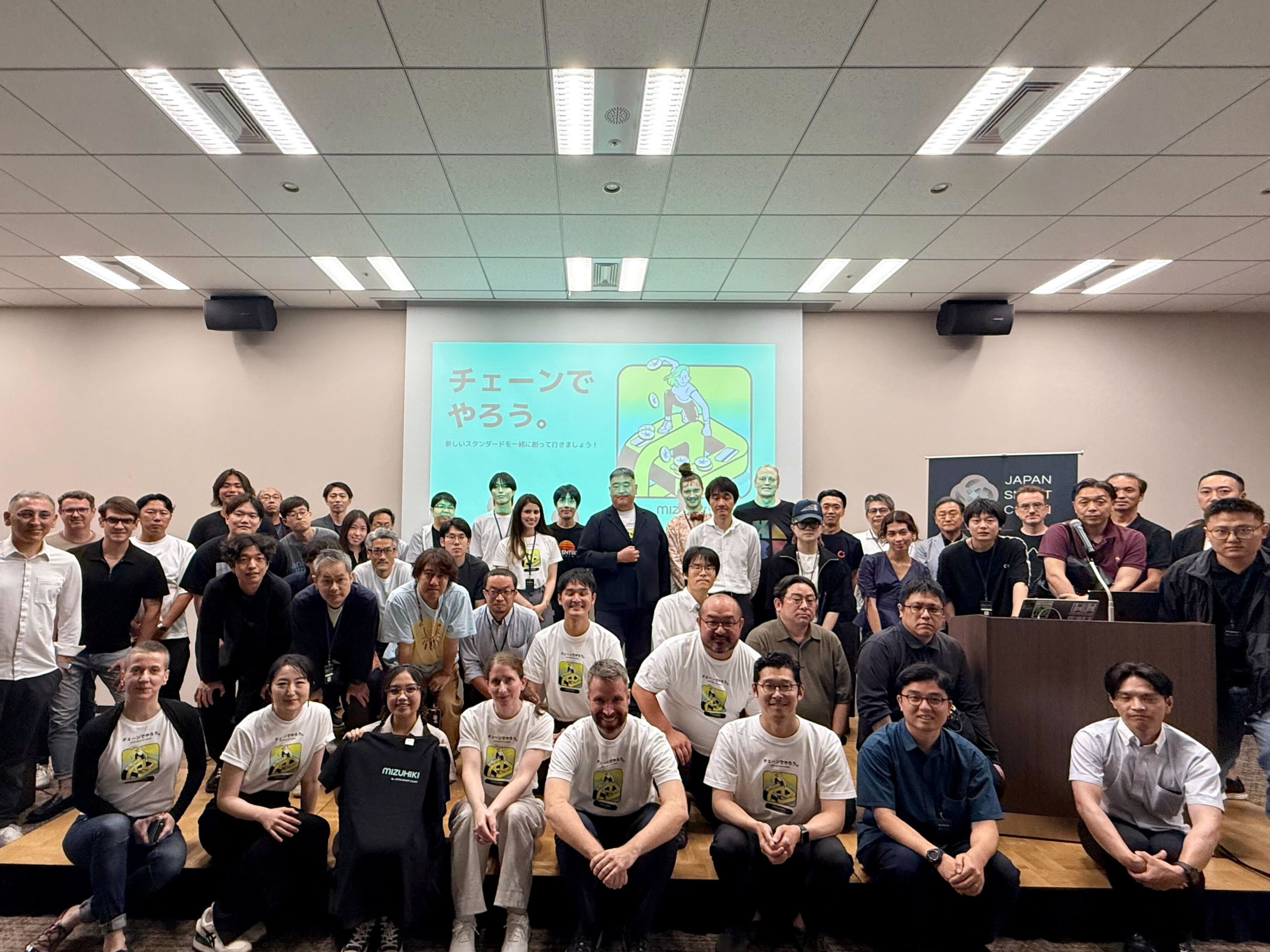
AltX Research K.K. hosted launch events in Tokyo and Fukuoka to celebrate the debut of the Japan Smart Chain (JSC) testnet and a demo of Mizuhiki Suite. The events brought together engineers building web3 applications on blockchain technology, as well as corporate leaders exploring new business opportunities.
Attendance at both venues far exceeded expectations, with over 110 participants in total. Featuring keynote sessions and networking receptions, each evening was marked by engaging questions, sharp insights, and an atmosphere of shared excitement.
The program opened with remarks from Gen Kanai, Co-Representative Director of AltX Research K.K., who introduced the vision behind JSC. He introduced that we’ve addressed the challenge posed by Japan’s limited validator infrastructure, which has hindered blockchain adoption, and presented JSC as an initiative “to create a new digital ecosystem built on trust, resilience, and inclusion.” He concluded with a call to action: “The launch of the testnet is a landmark first step we take together with engineers and vision partners. Let’s create a new standard together!”
The program then moved into an overview and live demo of the “Kaigan” testnet. Jeff Wentworth, Chief Architect at AltX Research K.K. and Co-founder of Curvegrid Inc., explained how JSC is fully compatible with Ethereum yet permissioned, maintaining Japan’s sovereignty to ensure robust governance. He outlined its design for long-term operation at both national and enterprise scales, highlighting its scalability and real-time capabilities enabled by low gas fees and high-speed processing. Jeff then conducted a live walkthrough of the testnet, showing participants how to access it and navigate its interface.
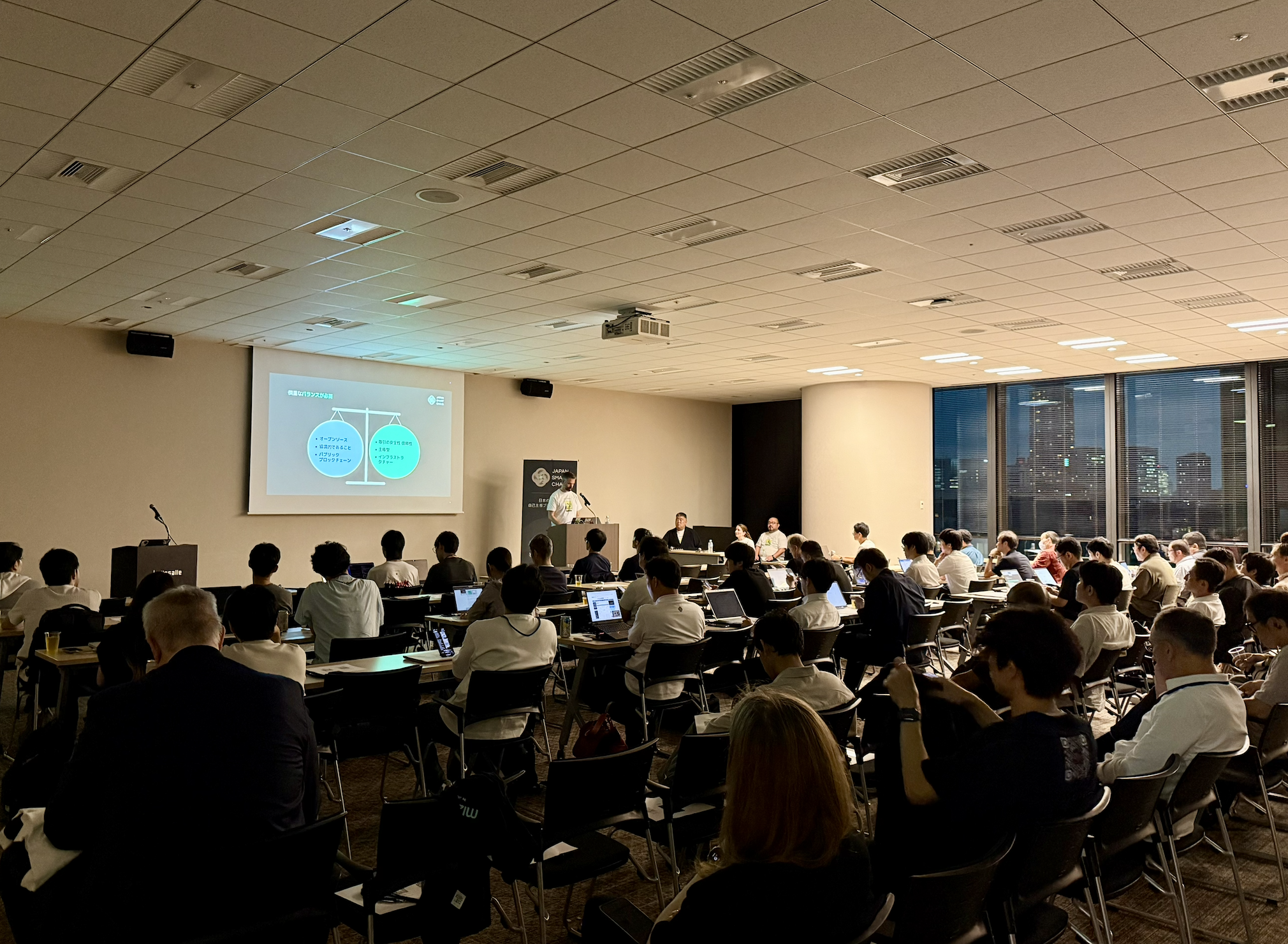
The spotlight then shifted to the “Mizuhiki Suite,” a modular trust and compliance layer built on top of JSC. Masaki Teranishi, Senior Product Manager at AltX Research K.K., presented the concept and key features, after which fellow Senior Product Manager Julia Szoradi brought it to life with a hands-on demo.
At the beginning, Teranishi referenced the results of a pre-event survey conducted during registration. In response to the question, “What do you see as the biggest challenges in developing web3 applications?”, roughly half of respondents cited “Security & Identity Verification,” “Regulatory Compliance,” and “UX/Onboarding.”
He then talked in more detail about the top challenge—Security & Identity Verification—sharing that, throughout his nearly 15 years in fintech and financial services, striking the balance between low-cost identity verification and minimizing user burden had consistently been a significant hurdle. While the Mizuhiki Suite addresses this pain point, he emphasized that it goes far beyond enabling eKYC. It is built on three layers—Identity, Compliance, and Risk Management—which can be flexibly configured to meet a wide range of needs. As a sample use case, he described a scenario where a user signs up with an exchange, transfers funds to an unhosted wallet, and also sends funds for investment purposes. Through this example, he illustrated the potential issues in the current environment and how Mizuhiki offers a comprehensive solution.
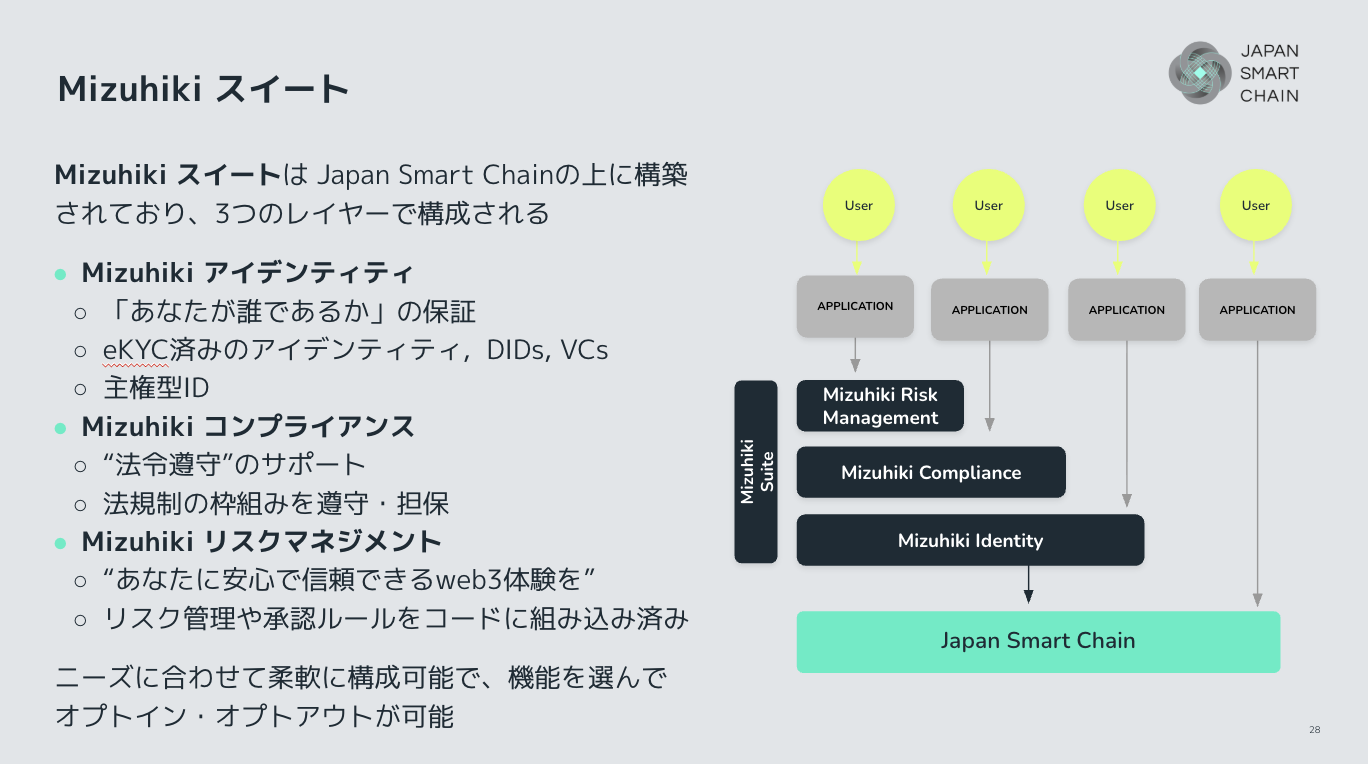
Next, Szoradi delivered a live demo, introducing the concept of Mizuhiki Identity. Using a My Number Card, the process of identity verification and SBT issuance was completed in under one minute, demonstrating its efficiency and user-friendliness. At the same time, the demo showcased Mizuhiki’s on-chain regulatory enforcement—if identity verification and minimal AML checks are not completed, regulated token transfers are automatically blocked and trigger an error. This moment gave participants a first-hand look at how Mizuhiki enables the creation of legally compliant digital services without compromising user convenience.

The session concluded with Takehiro Suzuki, Business Development Lead at AltX Research K.K., introducing our Vision Partner Program. He explained that Vision Partners are collaborators who resonate with the vision of the JSC as an “ecosystem co-creating next-generation infrastructure” and are committed to real-world implementation. He noted that 12 companies have already joined, and that JSC will continue to support the creation of new use cases. As part of this session, several Vision Partners also took the stage to share their own initiatives in the web3 space.
At the Fukuoka event, we welcomed Mr. Sadanori Shibuya, Head of web3 Development, CXO Office at Minna Bank, Ltd. He began by sharing the origin story of Minna Bank, which was launched from Fukuoka Financial Group, Inc., and highlighted how the bank has gained strong support—particularly among digital natives. Regarding its web3 initiatives, he explained that the bank had been active since as early as 2019, engaging in investments and proof-of-concept projects. Since 2023, they have also embarked on stablecoin-related initiatives. Mr. Shibuya expressed his alignment with JSC’s vision of “building infrastructure for Japan that everyone can use safely, and establishing a new standard for the digital society,” and shared his enthusiasm for the release of the Kaigan testnet and for future partnerships.
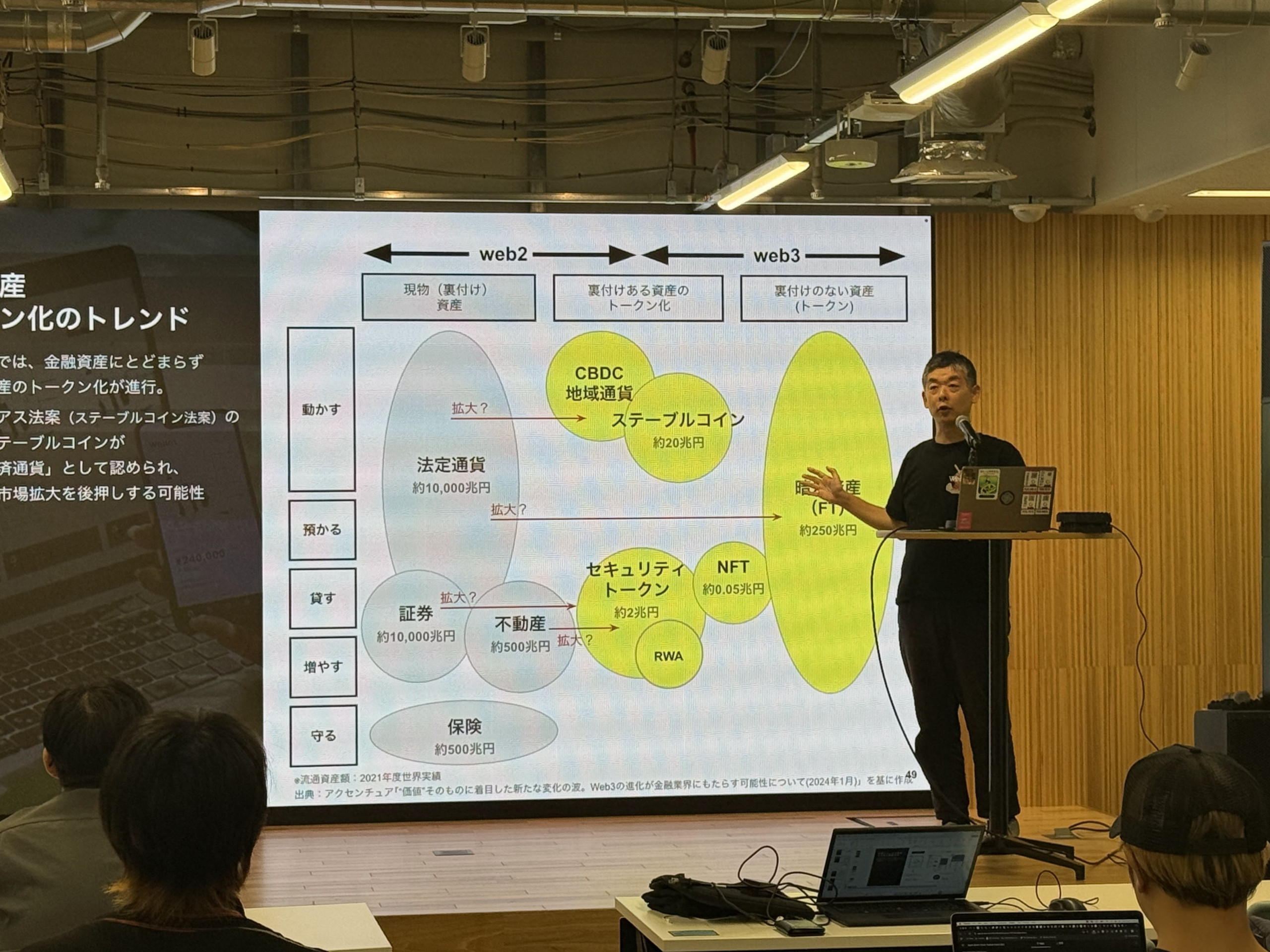
In Tokyo, we were joined by Mr. Takahiro Ariga, Core Staff of the Business Co-Creation Department, Open Innovation Division at KDDI Corporation, which had only recently announced its Vision Partner partnership with JSC. He highlighted KDDI’s strong track record of working with startups and introduced the company’s initiatives in the Web3 space through “αU,” a service launched in 2023 to further enhance user experiences and expand business domains. Finally, he outlined his expectations for JSC, including: addressing Japanese legal and regulatory requirements, adapting to Japan’s unique culture and business environment, enabling collaboration with strong partners through JSC’s network, and expanding Japanese use cases to the global stage.

The Q&A session brought in over 50 questions, covering topics from the testnet and Mizuhiki’s capabilities to long-term plans. Questions ranged from technical inquiries such as, “Why Layer 1 and not Layer 2?” “Is the Mizuhiki protocol completely free?” and “Will you support ID cards other than the My Number Card?” to operational questions like, “How can one become a validator?” We also received uplifting comments such as, “It would be amazing if Mizuhiki could serve as a passport in the future.” The discussion was lively, wide-ranging, and highly engaging.
The networking session that followed proved equally valuable. Participants offered diverse feedback on the testnet and Mizuhiki Suite, while also sharing the challenges and aspirations they face in their own web3 initiatives. The exchange of perspectives made for a highly productive and inspiring conclusion to the day.
The journey between JSC and our community has only just begun. We encourage all participants to make the most of the early access to the testnet and the Mizuhiki Identity demo app, and to share their insights. Every insight from the community will help lay the foundation for the JSC platform, as we work to build the infrastructure for a new digital society.
